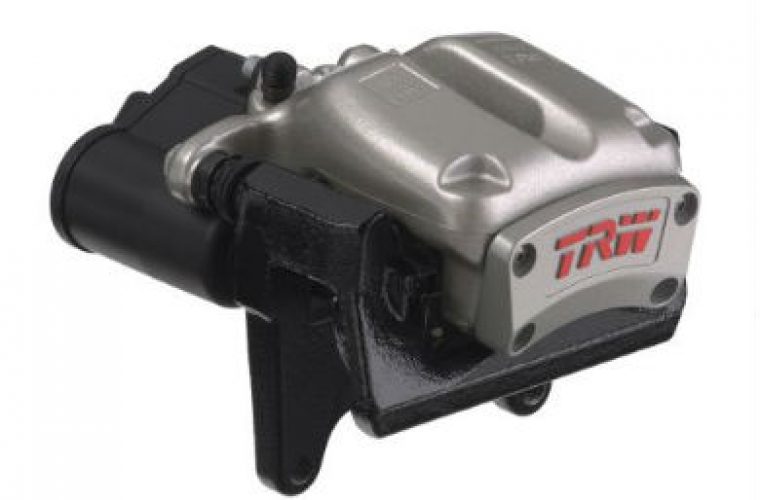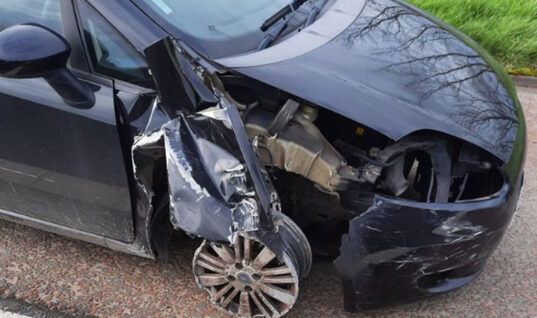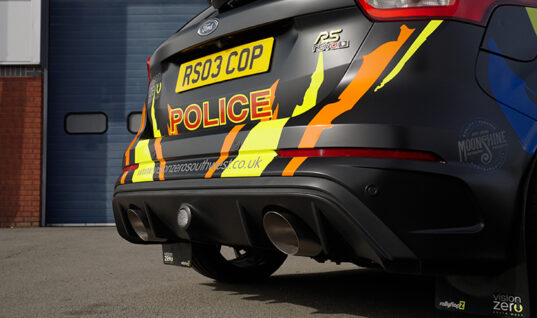Following ZF TRW’s recently announced production of its sixty millionth Electric Park Brake (EPB) motor-on-caliper unit, the company has released information on the features and benefits of the EPB.
ZF TRW was first to market with its EPB system in 2001 which pioneered with Lancia, Audi and VW and has since launched on Renault, Nissan and Daimler platforms, and more recently on the BMW X4 and BMW i8, Jeep Renegade, Fiat 500X, Ford F150, Honda Accord, Nissan Qashqai, Range Rover Evoque and more.![]()
How an EPB works
With EPB, the driver activates the holding mechanism with a button and the brake pads are then electrically applied onto the rear brakes, accomplished by an Electronic Control Unit (ECU) and an actuator mechanism.
There are two mechanisms currently used in vehicle production, cable puller systems and caliper integrated systems, such ZF TRW’s EPB.
In caliper integrated systems, the brake caliper provides a connection between hydraulic actuation of the foot brake and electrically actuated parking brake.
The motor or transmission unit (actuator), which operates the parking brake, is screw-fixed directly to the brake caliper housing.
The parking brake is actuated via a switch in the vehicle interior.
With no hand brake cables, there are no temperature problems or mechanical wear, offering optimum brake power in all conditions.![]()
 Features and benefits of EPB
Features and benefits of EPB
EPB is a fully integral part of the brake system with features such as dynamic actuation and brake pad wear sensing and reduces the degradation associated with mechanical systems.
The EPB also helps enhances safety in emergency situations.
Further, the hill-hold function, which applies brakes to prevent roll-back when pulling away on a gradient, can also be implemented using the EPB.
This opens the parking brake automatically when the engine provides sufficient torque to safely get the car moving.
And if the engine stalls, to prevent the car rolling backwards, the system automatically closes the parking brake. ![]()
Emergency braking
If the EPB switch is actuated while driving, it is interpreted by the system as emergency braking.
As immediate full braking would result in blocking the rear axle and the car breaking away at the rear, the parking brake is instead closed and opened again in rapid succession, ensuring safe braking of the car to a standstill.![]()
Child safety lock
The parking brake cannot be released when the ignition is off. ![]()
Automatic hold
The parking brake can be applied automatically as soon as the driver’s door is opened or the ignition is switched off.
Electronically controlled
EPB is electronically, rather than mechanically-controlled meaning it can work with a variety of vehicle systems and sensors.
ZF TRW offers a range of EPB solutions including standard EPB, integrated EPB which removes the requirement for a separate Electronic Control Unit (ECU) due to its integration with the Electronic Stability Control system, and EPB for front axles which can help to make the technology more affordable for a smaller vehicle segments.
Find out more about the TRW Automotive Aftermarket range by clicking ‘more details’ below.







